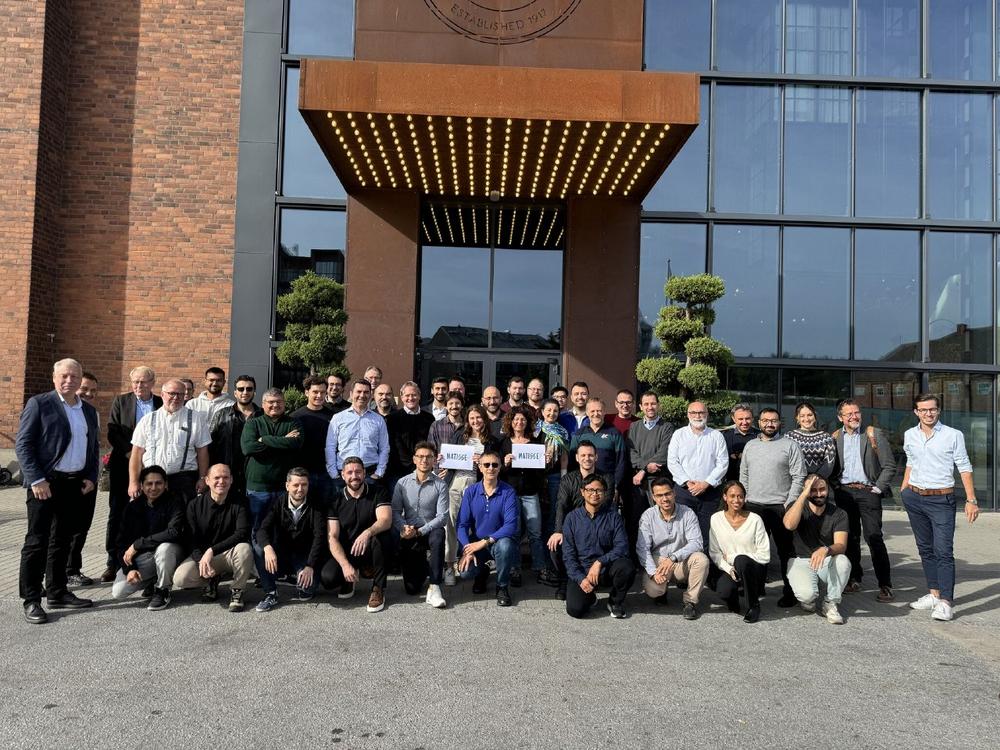LieberLieber: Kick-off for Matisse

Breaking News:
Wilde Würze & sanfte Aromen – KräuterWochen am Westlichen Bodensee
Der MindTecStore präsentiert sich im neuen Design: Modern. Klar. Nutzerfreundlich.
Picktan Capital erzielt mit seinem defensiven Wachstumsfonds Renditen in Rekordhöhe
Prozessoptimierung durch Technologie: Effizienz steigern, Kosten senken, Wettbewerbsvorteile sichern
Kathmandu Nepal
Mittwoch, Apr. 16, 2025

The central theme of MATISSE is the ‘Model-based development of digital twins for the early verification and validation of industrial systems’. Dr Konrad Wieland, CEO of LieberLieber, comments: ‘We are very pleased about the recognition of our contribution to the VALU3S project, which we can now continue and deepen in MATISSE. We are contributing our many years of expertise in the field of software and system modelling as well as the modelling language VVML, which we helped to develop. On this basis, we will work with industry and research partners on the current topic of ‘digital twins’ in concrete application examples. This will give us the opportunity to make a contribution to strengthening Europe’s technological sovereignty and show once again that small and medium-sized enterprises are also important technology drivers in Europe.’ LieberLieber and the University of Innsbruck will be working with Siemens on the use case ‘Optimisation of microgrid control via a digital twin’. A microgrid is a group of interconnected users and distributed energy resources that acts as a single controllable unit.
Everything focusses on digital twins
The main objective of the MATISSE project is to create a framework of methods and tools for the efficient and continuous development and validation of industrial systems supported by digital twins. The aim is to take advantage of model-based, data-driven and cloud techniques to enable validation and verification services that significantly improve productivity and quality. MATISSE aims to enable European research and industry to provide digital twin-based services, including verification, prediction and monitoring, thus improving the overall development and interconnection of digital twins. This effort relies heavily on the use of models and model-based techniques, including both general-purpose languages such as UML/SysML and domain-specific languages (such as VVML) and model transformations. These tools will cover various aspects of the system development process, such as design, modelling quality, test procedures, verification and validation.
2nd place at the Digital Twin Hackathon
At the MATISSE General Assembly in Rome in March 2025, over 50 members met to strengthen the MATISSE framework for the model-based development of trustworthy digital twins. The meeting opened with the first MATISSE hackathon, in which LieberLieber’s team took 2nd place.
During the hackathon, use case providers and solution developers worked together to create prototypes for architectural solutions to nine real-world challenges. An important goal here is the model-based development of trustworthy digital twins.
The LieberLieber team (Konrad Wieland, Robert Sicher) consisted of representatives from Siemens (Juliana Kainz, Danilo Valerio, Richard Comploi-Taupe, Dominik Gorickic), the University of Innsbruck (Philipp Gritsch) and the Johannes Kepler University Linz (Luca Berardinelli). The three winners were selected following the teams‘ presentations on the basis of innovation, feasibility and potential impact. Konrad Wieland comments: ‘We are very proud of our 2nd place in the MATISSE Hackathon on digital twins. Our approach to the use case ‘Optimisation of microgrid control via a digital twin’ seems to have convinced many of those present. This gives us even more energy to continue working on our highly topical task.’
LieberLieber’s objectives in the MATISSE project
LieberLieber expects the MATISEE project to lead to innovations in the following areas:
MATISSE: 1st scientific publication published
Recently, the MATISSE partners Johannes Kepler University Linz and Gran Sasso Science Institute (Ludovico Iovino, Daniel Lehner, Luca Berardinelli, Manuel Wimmer) published a first scientific paper entitled ‘Leveraging Model Lifting for KPI-Based Quality Assessment of Digital Twins’. New digital twin (DT) platforms offer services for collecting information from and interacting with cyber-physical systems (CPS). A DT cockpit is a service that supports the quality assessment of a running system, often through the visualisation of Key Performance Indicators (KPIs). The published paper presents KPIs4DTs, a flexible framework for KPI assessment that can be integrated into existing DT platforms and enables the support of different domains.
Link: https://matisse-kdt.eu/results/leveraging-model-lifting-kpi-based-quality-assessment-digital-twins
MATISSE – A project of the Chips Joint Undertaking
The Chips Joint Undertaking (Chips JU) is a public-private partnership that supports research, development and manufacturing capabilities in the European semiconductor ecosystem. It addresses the semiconductor shortage and strengthens Europe’s technological sovereignty. The Chips JU continues to support the ongoing activities of the Key Digital Technologies Joint Undertaking (KDT JU).
Chips JU continues the predecessor initiative of the Key Digital Technologies KDT JU, i.e. the funding of cooperative transnational R&D projects in the fields of microelectronics, embedded software, smart systems, sub-areas of photonics and current topics such as edge computing and Risc-V. At the same time, the objectives of the first pillar of the European Chips Act will be implemented, i.e. investments in technological capacities such as pilot plants, chips competence centres or a European design platform.
MATISSE is funded as part of the Chips Joint Undertaking (formerly KDT JU) by the Horizon Europe programme of the European Union and the national authorities under the grant agreement 101140216.
We are a software engineering company. The know-how of our employees lies in model-based software and system design based on tools such as Enterprise Architect from Sparx Systems.
Our customers are companies that place particular importance on the quality of their software and systems development. They wish to maintain a constant overview of their complex development scenarios while ensuring that security-relevant requirements are clearly represented in models.
For this task we provide our own special tools, such as LemonTree and Embedded Engineer. In addition, we offer a range of useful tool integration services to help make our customers‘ development processes more productive.
LieberLieber is a business unit of Lieber.Group, has its headquarters in Vienna (Austria) and a branch in Houston/Texas (USA).
More information: www.lieberlieber.com
LieberLieber Software GmbH
Handelskai 340, Top 5
A1020 Wien
Telefon: +43 (662) 90600-2017
Telefax: +43 (662) 90333-3017
http://www.lieberlieber.com
![]()